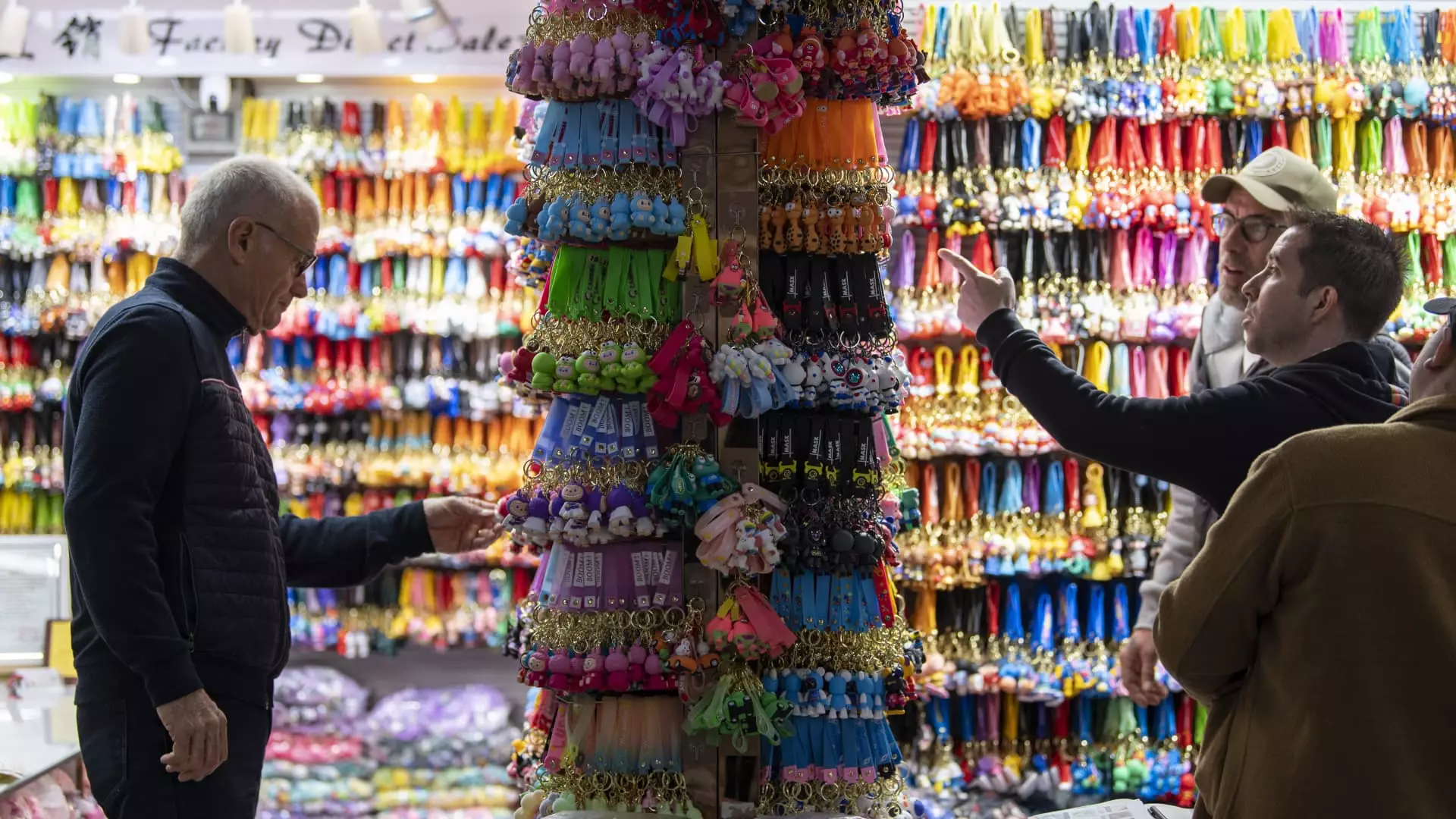As the holiday season approaches, the retail landscape undergoes a transformation that is both anticipated and disconcerting. The phenomenon of “Christmas creep” is a well-documented trend where retailers begin to display holiday merchandise earlier each year, attempting to squeeze every possible dollar out of consumers’ festive spending. This phenomenon can be a double-edged sword; while early displays can entice shoppers to spend, they can also cover the market with an overwhelming illusion of abundance. However, this year, the exuberance surrounding a jolly marketplace faces an unprecedented challenge—the looming specter of tariffs on imports, particularly from China. As these tariffs are implemented, we are forced to ask: will our shopping experiences be forever altered by economic policies that prioritize trade standoffs over consumer choice?
The Grinch in Trade Policy: An Overview of Tariffs
The narrative is clear: aggressive tariffs imposed by the U.S. government, soaring as high as 145% on a plethora of goods, cast a dark shadow over holiday preparations. What began with a swift stroke of President Trump’s executive order morphed into a conundrum for U.S. retailers as they contemplate the domino effect of reduced production capacities and increased costs associated with navigating these tariffs. The implications are particularly severe during the busiest shopping season of the year, forcing retailers to reevaluate their supply chains and risk losing out to an evolving market climate.
Disruption in supply chains isn’t merely a logistical inconvenience; it poses a significant threat to economic stability. With reports emerging that many retailers are hesitating to place orders with Chinese suppliers, factories have already begun to feel the impact. The connection between U.S. buyers and manufacturers in China isn’t just transactional—it’s a network of dependencies that support entire communities. Thus, the reality of halting operations ripples outwards, affecting the too-often-overlooked workers reliant upon that very production. When talking about tariff measures, one cannot overlook the human element: families impacted by sudden job uncertainties will ultimately bear the brunt of what should be a joyous season.
Inventory Management: To Stock or Not to Stock?
In an attempt to adapt to the shifting landscape, many retailers have engaged in frontloading—stockpiling inventories in anticipation of potential tariff hikes. Market enthusiasm saw exports from China increase by 9.1% in March compared to the previous year. Yet, as this strategy ran its course, smoke signals began to appear: canceled shipments shot up dramatically, exposing the fragility of a system designed to respond to last-minute changes in policy. As of April, a significant decline in outgoing cargo from China suggests that retailers’ chances to order and stockpile in time for the holidays are diminishing rapidly.
The impact of this inventory management battle could be profound. Consumers risk encountering sparse shelves and empty displays—an irony given that early holiday displays often boast of festive abundance. Without timely production, we are left grappling with the reality that consumers might not find the shimmering gifts they expect, tarnishing what should be an unforgettable season of merriment. The deep-rooted connection between timely supply delivery and consumer satisfaction cannot be overstated.
Waiting Game: Speculation and Anxiety Among Retailers
The situation is further complicated by the hesitation among U.S. buyers to engage in order placements. Pondering whether tariff environments will shift, manufacturers in China are left in limbo. Many are reporting a stark drop in purchase orders after a promising stock-up phase. While some businesses are hedging their bets by cautiously resuming production of smaller batches, trusting that relief may be imminent, this “wait and see” approach is riddled with risks that could lead to empty store shelves come holiday time.
This precarious balancing act is echoed by stories from various sectors, each undergoing the same struggle to find balance amid rising uncertainty. Consumer-driven businesses must maintain hope that any favorable developments will surface, yet with every passing week, the looming dread of unfulfilled holiday promises begins to suffocate both businesses and shoppers alike.
The Economics of Grinches: Should We Be Concerned?
Tariffs may appear as government-enforced resolutions, yet they pivot from fiscal policy to an uninvited nixture of anxiety and dissatisfaction among consumers. As companies grapple with production disruptions, consumers are left disillusioned—shoppers who have long delighted at the prospect of festive giving now find themselves in a precarious cycle of uncertainty. The interchange between consumer satisfaction and government policy serves as a reminder of the fragile interconnectedness that defines our global economy.
Frustratingly, the promise of joyous holidays is tinged with the specter of disappointment as economic factors overshadow the season’s optimism. It leaves one wondering: how many more years must we brave this cycle of indecision before a genuine festive spirit returns?

Leave a Reply